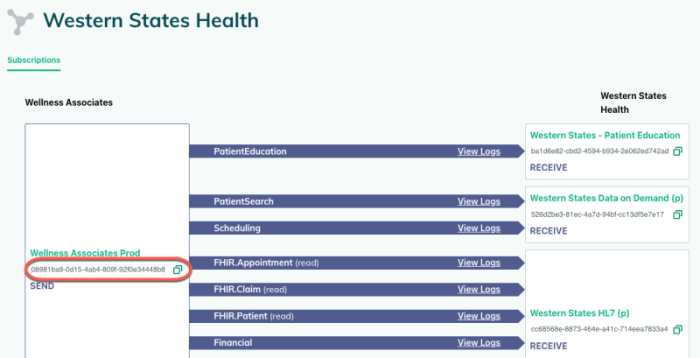In terms of data exchange, we tend to focus on the destination, or the intended endpoint, of a request. We can't forget that for every request delivered, it has to originate somewhere first.
A system typically only needs one source to send requests from unless data is exchanged in multiple formats that require different configurations. A source, or the initiating point of a request, is identified in either the header or payload with source-ids.
If you only have one source, it's entirely optional to identify the source-id in an outgoing request.
If your system has multiple sources (e.g., if your system sends and receives data via an API and SFTP), you must identify the relevant source-id in any outgoing requests. That way, Redox knows where the request came from, what configuration to apply, and who to notify in case of errors.
You can either locate the source ID in the Redox dashboard or via the Platform API.
Review the Platform API reference for retrieving a list of sources and their corresponding IDs.
If you're using legacy API keys, open the Redox dashboard and navigate to the Developer page to locate the source-id. By default, the API keys tab displays. Under the Legacy API keys section, find the key associated with the source you want to use. Use the key ID as the source-id.

If you're using OAuth API keys, open the Redox dashboard and navigate to the Connections page to locate the source-id. By default, the Subscriptions tab opens. All of your sources display on the left side of the subscription. Find the source you want to use. Copy the source-id.

If you're using the Redox Data Model API, identify the source in the Meta.Source.ID field of the request payload. Remember that this field is only required if you have more than source in your environment.
If you're using the Redox FHIR® API, identify the source by adding the Redox-Source-Id header to the outgoing request. Remember that this header is only required if you have more than one source in your environment.